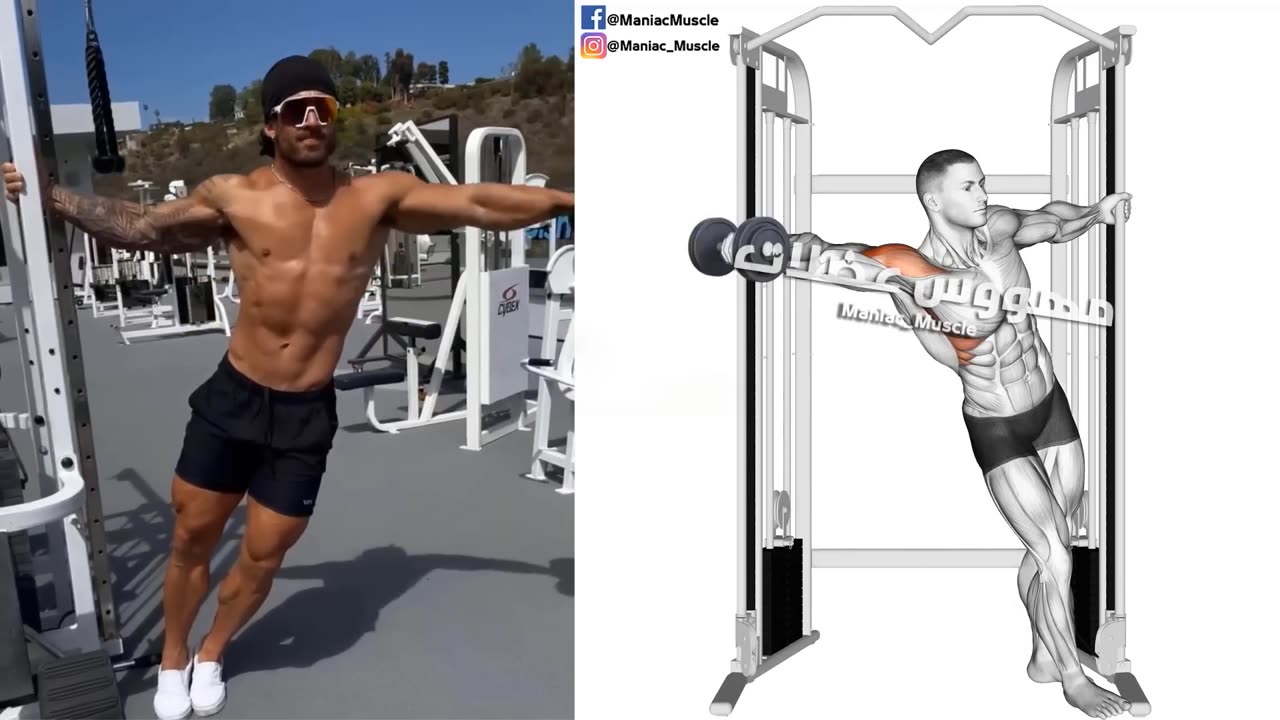Premium Only Content

UPPER BODY WORKOUT WITH DUMBBELLS (Shoulder-forearms-chest-triceps-back-biceps)
An upper body workout with dumbbells is an effective and versatile routine designed to target various muscle groups in the upper portion of your body. This workout can help you build strength, increase muscle tone, and enhance overall upper body aesthetics. The routine focuses on the following muscle groups: shoulders, forearms, chest, triceps, back, and biceps. Here's a brief description of each component of the workout:
Shoulders: Perform exercises like dumbbell shoulder presses, lateral raises, and front raises to target the deltoid muscles. These exercises help build broader and well-defined shoulders.
Forearms: Engage your forearms with wrist curls and reverse wrist curls using dumbbells. These exercises enhance grip strength and forearm muscle development.
Chest: Incorporate dumbbell bench presses, incline presses, and flyes to effectively target the pectoral muscles. These movements contribute to a stronger and more sculpted chest.
Triceps: Execute triceps exercises such as dumbbell triceps extensions (skull crushers), triceps kickbacks, and overhead triceps extensions. These movements contribute to the development of the back of your arms.
Back: Work your back muscles with dumbbell rows, bent-over rows, and single-arm rows. These exercises target the lats, rhomboids, and upper back muscles, promoting a well-balanced and strong back.
Biceps: Engage your biceps with dumbbell curls, hammer curls, and concentration curls. These exercises help develop the front of your upper arms and contribute to the coveted "bicep peak."
To create an effective upper body workout with dumbbells, consider selecting 2-3 exercises for each muscle group and performing 3-4 sets of 8-12 repetitions for each exercise. Make sure to choose weights that challenge you but still allow you to maintain proper form throughout each set. Remember to warm up before the workout and cool down afterwards, and always prioritize safety and proper technique to prevent injury.
Before starting any new workout routine, especially if you're new to exercise or have any pre-existing health conditions, it's recommended to consult a fitness professional or healthcare provider to ensure the routine is appropriate for your individual needs and goals.
-
 1:14:34
1:14:34
Michael Franzese
6 hours agoWhat's Behind Biden's Shocking Death Row Pardons?
46.6K32 -
 9:49
9:49
Tundra Tactical
5 hours ago $1.92 earnedThe Best Tundra Clips from 2024 Part 1.
16.3K4 -
 1:05:19
1:05:19
Sarah Westall
5 hours agoDying to Be Thin: Ozempic & Obesity, Shedding Massive Weight Safely Using GLP-1 Receptors, Dr. Kazer
28K9 -
 54:38
54:38
LFA TV
1 day agoThe Resistance Is Gone | Trumpet Daily 12.26.24 7PM EST
22.6K3 -
 58:14
58:14
theDaily302
14 hours agoThe Daily 302- Tim Ballard
30.1K1 -
 13:22
13:22
Stephen Gardner
7 hours ago🔥You'll NEVER Believe what Trump wants NOW!!
80.4K214 -
 54:56
54:56
Digital Social Hour
1 day ago $8.77 earnedDOGE, Deep State, Drones & Charlie Kirk | Donald Trump Jr.
42K4 -
 DVR
DVR
The Trish Regan Show
9 hours agoTrump‘s FCC Targets Disney CEO Bob Iger Over ABC News Alleged Misconduct
48.7K34 -
 1:48:19
1:48:19
The Quartering
9 hours agoElon Calls White People Dumb, Vivek Calls American's Lazy & Why Modern Christmas Movies Suck!
131K104 -
 2:08:42
2:08:42
The Dilley Show
10 hours ago $34.34 earnedH1B Visa Debate, Culture and More! w/Author Brenden Dilley 12/26/2024
115K25